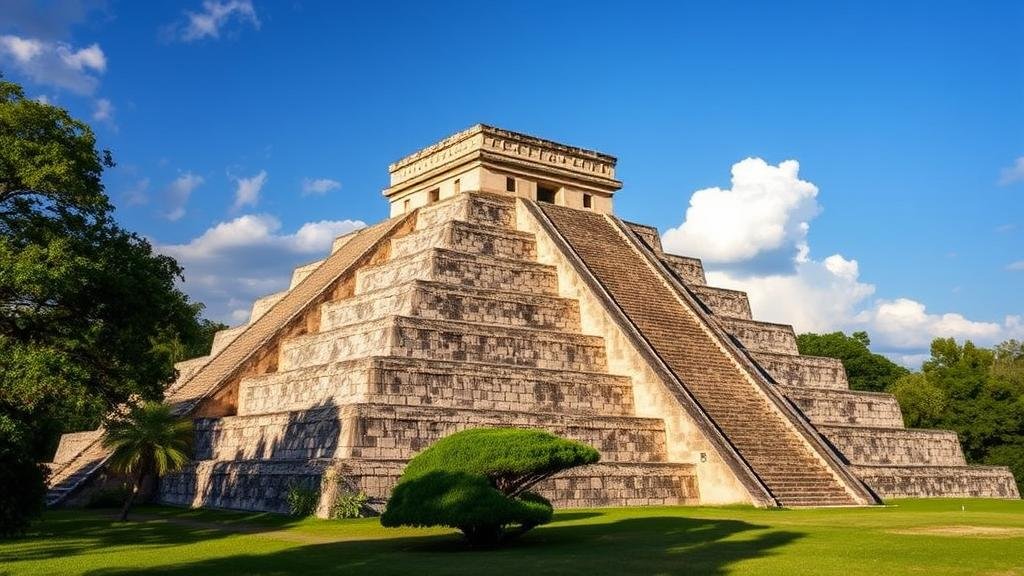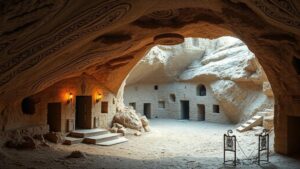Exploring the myths of El TajÃn, an uncharted city of the Totonac civilization.
Exploring the Myths of El TajÃn, an Uncharted City of the Totonac Civilization
El TajÃn, located in the state of Veracruz, Mexico, is a UNESCO World Heritage Site that serves as a testament to the architectural and cultural sophistication of the Totonac civilization, which thrived between 600 and 1200 CE. Often shrouded in myths and misconceptions, the sites monumental structures and rich history invite intrigue and exploration. This article seeks to unravel the myths surrounding El TajÃn while providing a factual foundation about its significance, architecture, and the Totonac people.
Historical Significance of El TajÃn
The origins of El TajÃn can be traced back to the early Totonac civilization, which played a vital role in the cultural and political landscape of Mesoamerica. city served as a major center for trade and religious activities, showcasing a blend of both spiritual and societal elements that characterized Totonac life.
Archaeological discoveries in the 20th century revealed that at its peak, El TajÃn housed approximately 20,000 inhabitants in the 9th and 10th centuries, making it one of the most influential urban centers of its time. The sites layout is emblematic of meticulous urban planning, featuring over 150 pyramids, temples, and plazas.
Architectural Wonders and Their Myths
El TajÃn is perhaps best known for its remarkable pyramids, particularly the Pyramid of the Niches. This structure is composed of 365 niches, leading to speculation about its astronomical significance. Some believe that it was used as a calendar or to track solar and lunar cycles.
But, the true purpose of these niches remains a subject of debate. The absence of written records from the Totonac civilization leaves much of its interpretation open to speculation. In contrast to other Mesoamerican cultures, such as the Aztecs and Maya, which had extensive hieroglyphic writing systems, the Totonacs left few traces of their linguistic heritage.
- The Pyramid of the Niches: Believed to have functioned as a ceremonial site.
- The Temple of the Inscriptions: Features intricate bas-reliefs showcasing battle scenes.
Myth vs. Reality: Cultural Practices
Another prevalent myth surrounding El TajÃn is its association with violent rituals, particularly human sacrifices. While it is widely accepted that Mesoamerican cultures, including the Aztecs, practiced sacrificial rituals, the evidence at El TajÃn suggests that such practices may not have been as commonplace as believed. Archaeological findings predominantly indicate a focus on fertility rites, agricultural celebrations, and dance rituals.
For example, the Totonacs are known for their vibrant Totonac Dance, a ceremonial performance that celebrates the regions rich agricultural bounty. This emphasizes a close relationship with nature rather than violence.
Modern Interpretation and Preservation Efforts
In contemporary times, El TajÃn has garnered increased attention for its architectural beauty and historical significance. Researchers and archaeologists continue to study its enigmatic past, highlighting its role in understanding prehistoric Mesoamerican life.
Efforts to preserve El TajÃn have ramped up since its designation as a UNESCO World Heritage Site in 1992. The site attracts thousands of visitors annually, who come to appreciate its grandeur and learn about the Totonac civilizations cultural achievements.
- Educational programs for visitors on the history and culture of the Totonac.
- Restoration projects aimed at maintaining the structural integrity of key sites.
Real-World Applications of El TajÃns Lessons
The exploration of El TajÃns myths serves as a reminder of the importance of preserving cultural heritage. Understanding how myths evolve around historical contexts can help promote cultural empathy and awareness. Plus, as urban centers grow globally, the lessons drawn from El TajÃns design and societal structure can inform modern sustainability practices, focusing on community interdependence and responsible land management.
Actionable Takeaways
- Research and engage with reliable historical sources about Mesoamerican cultures.
- Visit sites like El TajÃn to foster a greater appreciation for cultural heritage.
- Support preservation efforts through donations or participation in educational programs.
To wrap up, El TajÃn stands as a monumental relic of the Totonac civilization, inviting us to explore not only its physical grandeur but also the myths that envelop it. By distinguishing fact from fiction, we can appreciate this ancient city not just as a historical site but as a vibrant wellspring of cultural significance.



